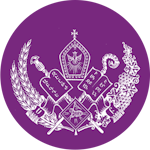According to a manuscript, this church existed in 1630, near the Church of St. Nicholas in the Greek part of the same district. During the reign of Patriarch Hovhannes Camasirjian, Sultan Selim III issued a decree in 1811 ordering those who obstructed the performance of religious services at the church to abandon their actions. According to records, construction of the church began in 1813. The church was rebuilt in 1823 and consecrated a third time in 1832. Patriarch Isdepanos II Aghavni appealed to Sultan Mahmud II in 1831 for permission to rebuild the dilapidated church.
The new church was built with the architectural design of Vartan Kalfa Tıngıryan. Although the people of the time tried to raise funds to cover the construction costs, the funds were insufficient to cover the costs. The imam of the Ahmet Pasha Mosque, Hacı Kaim Efendi, collected funds from nearby mosques and Islamic shops, securing 8,500 kuruş, thus completing the construction. Later, the church, damaged in the great earthquake of 1894, was renovated. Used for military purposes during World War I, the church was renovated in 1927 and dedicated by Patriarch Mesrob I Naroyan. The church was renovated again in 1987. The church underwent its final restoration in 2000, when it was consecrated and reopened for worship by Patriarchal Vicar Archbishop Aram Ateşyan.

